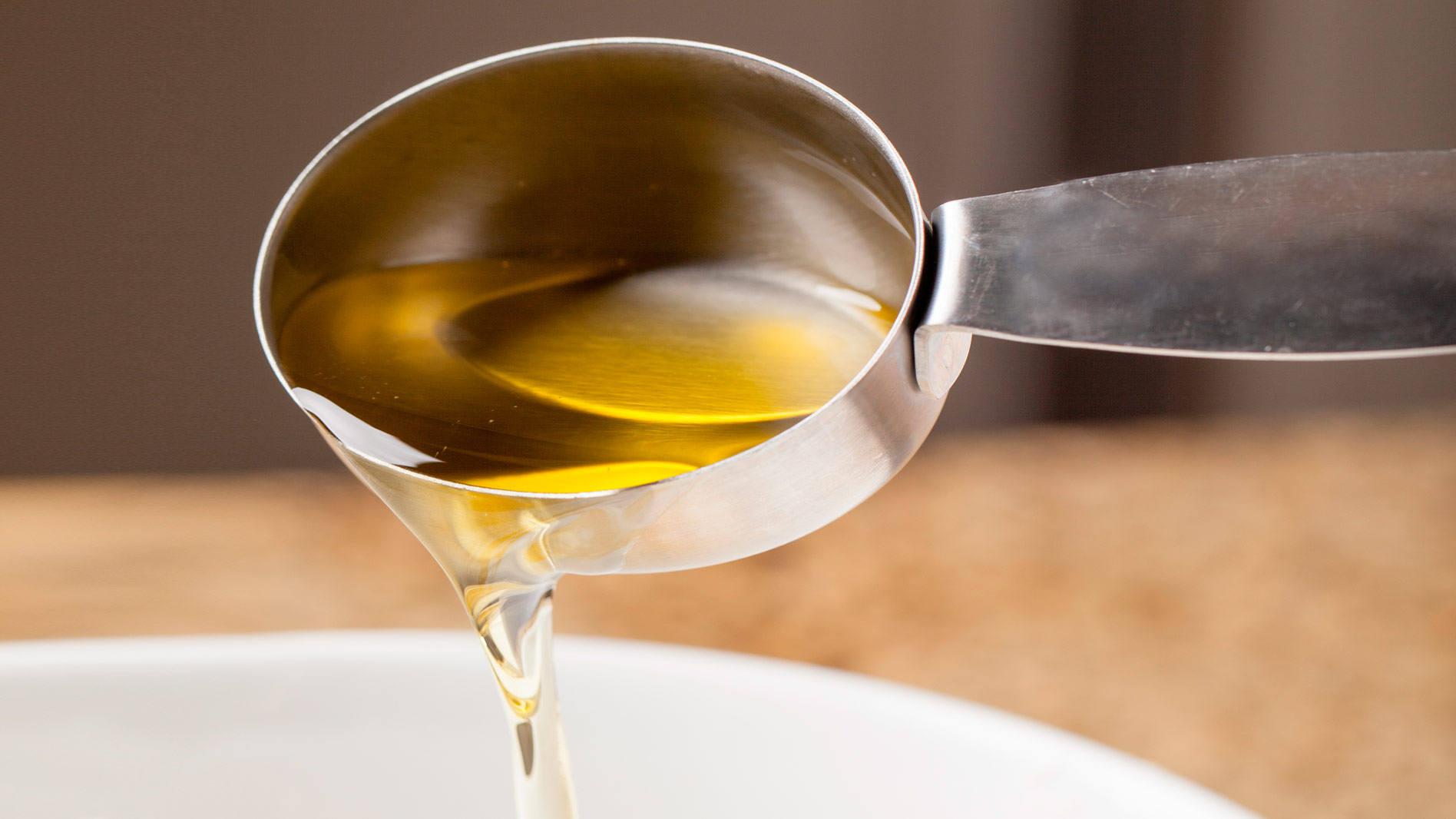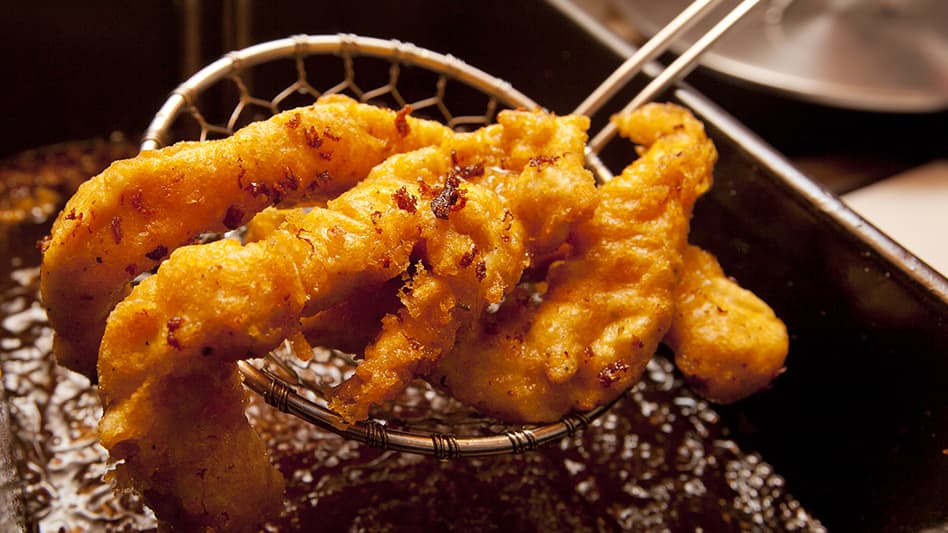
Dont’t waste time cooking dishes to only be let down by the oil in your kitchen. Find out what oils work best across your menu to ensure maxium flavour is achieved every time.
There is nothing worse than putting in all the time and effort for prepping, then cooking and finally plating only to uncover the dish is lacking taste or has an over-powering punch to it.
And despite spending some time reviewing all the ingredients you used for the dish, you just can’t work out where you went wrong.
Well…when was the last time you properly thought about the oil in your pantry?
Have you become a fan favourite of one type of oil and decided to just use it across your menu, even for your desserts?
Your choice of oil could be where your issue lies.
When you use oil in your kitchen, you need to ensure you are using the right type for each dish.
Whether it is cooking chicken, red meat, deep fried goods like chips or using it as a dressing for salads, oil has its place on your menu.
Here is how you can enhance the flavouring of your dishes with the use of the correct oils:
Cooking proteins with oil:
Chicken:

Chicken can be cooked in a number of ways – pan fried, deep fried, grilled and even baked.
But when it comes to selecting the right oil to ensure the quality of the chicken isn’t jeopardised, you need to pick one that has a high smoke point.
While extra-virgin olive oil is an easy go-to due to its reported health benefits, it will in fact leave your chicken with a bitter taste once cooked.
That’s why canola oil, vegetable oil or peanut oil are highlighted as the perfect options for your chicken dishes.
Besides the popular options, some chefs have also opted for avocado oil for pan frying their chicken (or turkey).
This approach has helped them enhance the protein’s overall flavour component – though it is a more expensive method.
Red meat:
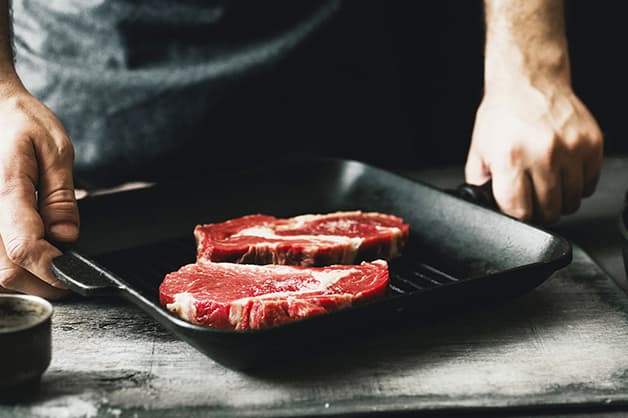
When cooking red meat, it is important to choose an oil that has a high smoke point.
By opting for an olive oil or a butter – which has a smoke point of 350 degrees – all you will be achieving is thick smoke and bad flavouring transferred to your meat.
When it comes to grilling or frying, you can’t go past a canola oil or peanut oil.
These oils are best suited to the task due to their high smoke point of over 400 degrees.
If you are simply performing a light pan fry, sunflower oil is suitable.
And when it comes to using sunflower oil, you have the added bonus of a subtle flavouring being transferred to your source of protein.
Achieving the perfect golden crunch with the right oil:
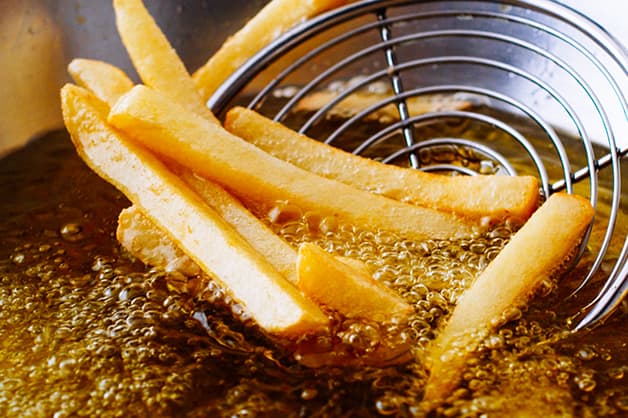
Deep fried foods are everywhere these days.
There’s always at least one item on menus that is deep fried – commonly chips (or fries as some of you may call them).
But besides from the classic chips, deeps fried foods such as fish, spring rolls and fried mozzarella sticks are becoming popular offerings – especially takeaway and QSR.
So, when it comes to deep frying any type of food, make sure you are using an oil that has a high smoke point and doesn’t release a strong flavour during the frying process.
Neutral-tasting oils such as canola, vegetable, sunflower and grapeseed are the preferred choice of oil for this procedure.
Cottonseed oil can also be used for deep frying due to its ability to deliver a crisp battered shell on foods such as fish and chips.
The key to achieving perfect, crispy, deep fried, dishes starts by finding the best oil for deep frying. Explore Goodman Fielder Food Service’s selection of premium frying oils.
For a full rundown on deep frying, check out our Deep Frying Guide .
How oils can affect your salads:
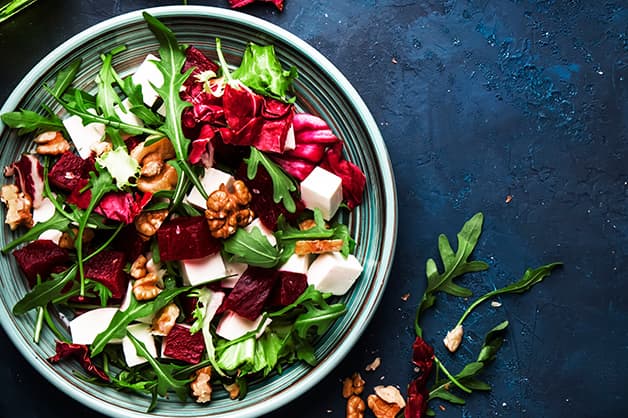
Salads are a staple dish for every menu.
Whether it is as a side offering or a standalone, it will be printed, ready for the customer’s eye to catch a glimpse of it.
Dressings add that extra bit of punch to salads, it’s the final component of the dish that really brings to life the natural flavours of the fresh produce.
And sometimes all you need is a drizzle of oil.
Extra-virgin olive oil is the most commonly used oil when it comes to salads, thanks to its fruity flavouring.
And with its slight nutty lacing, it’s the perfect dressing for a caprese salad, Greek salad or anything that incorporated spinach.
Avocado oil has also become popular with chefs when it comes to salad dressings due to its very mild buttery taste – making it the perfect spring salad dressing.
It’s also been used across menus as a finishing touch for burrito bowls and heartier salads that include greens such as kale and beans.
Though for a real punchy, nutty flavour, oils like macadamia or flaxseed can also work.
These oils are the perfect addition for salads that incorporate pecans, walnuts, and shredded almonds.
Don’t ruin your baked sweets flavouring with the wrong oil:

Baked sweets are created for customers to simply crave more.
It’s simple…if you win customers over via their tastebuds, you’ve earned yourself a customer for life.
But when it comes to baked sweets, fats and oils plays a crucial part in ensuring the flavour and texture are perfect with every batch.
And in some cases, not all oils and fats work as well.
For cakes, cookies and brownies, canola oil and sunflower oil are the most common option chefs choose due to their non-discernible flavour.
By choosing an oil that has very little flavour, it allows the baked good to really showcase its flavour components with every bite.
And don’t forget about the rich smells that fill your venue with a freshly baked good.
Then you have coconut oil.
Coconut oil can also be used for sweet and savoury goods but it can affect your final product with its mild coconut taste.
So, if that is what you are going for, then this is the oil for you.
Vegetable oil can also be used for your sweets, as it helps prevent cakes from drying out.
But when using vegetable oil for baking, be careful with the amount you use as it can alter the flavour you are trying to achieve.
Conclusion:
So next time you reach for the bottle or can of oil in the kitchen, stop to have a think about the purpose to which you are using it for.
Is it to deep fry some chicken or chips?
Or to fry a piece of steak or bake a sweet dessert?
For each task, there is an oil that is best suited to ensure you are delivering your customers the best flavoursome result there is to offer.
Goodman Fielder is one of Australia’s leading bulk oil suppliers for food services, bakeries and other commercial applications. Discover the range today.


